Best full-suspension mountain bikes – our pick of the top XC, downcountry, and trail MTBs
Which full-suspension mountain bikes are the pick of bunch for XC, downcountry, and trail riding? We've tested the best full-suspension machines for whatever you ride
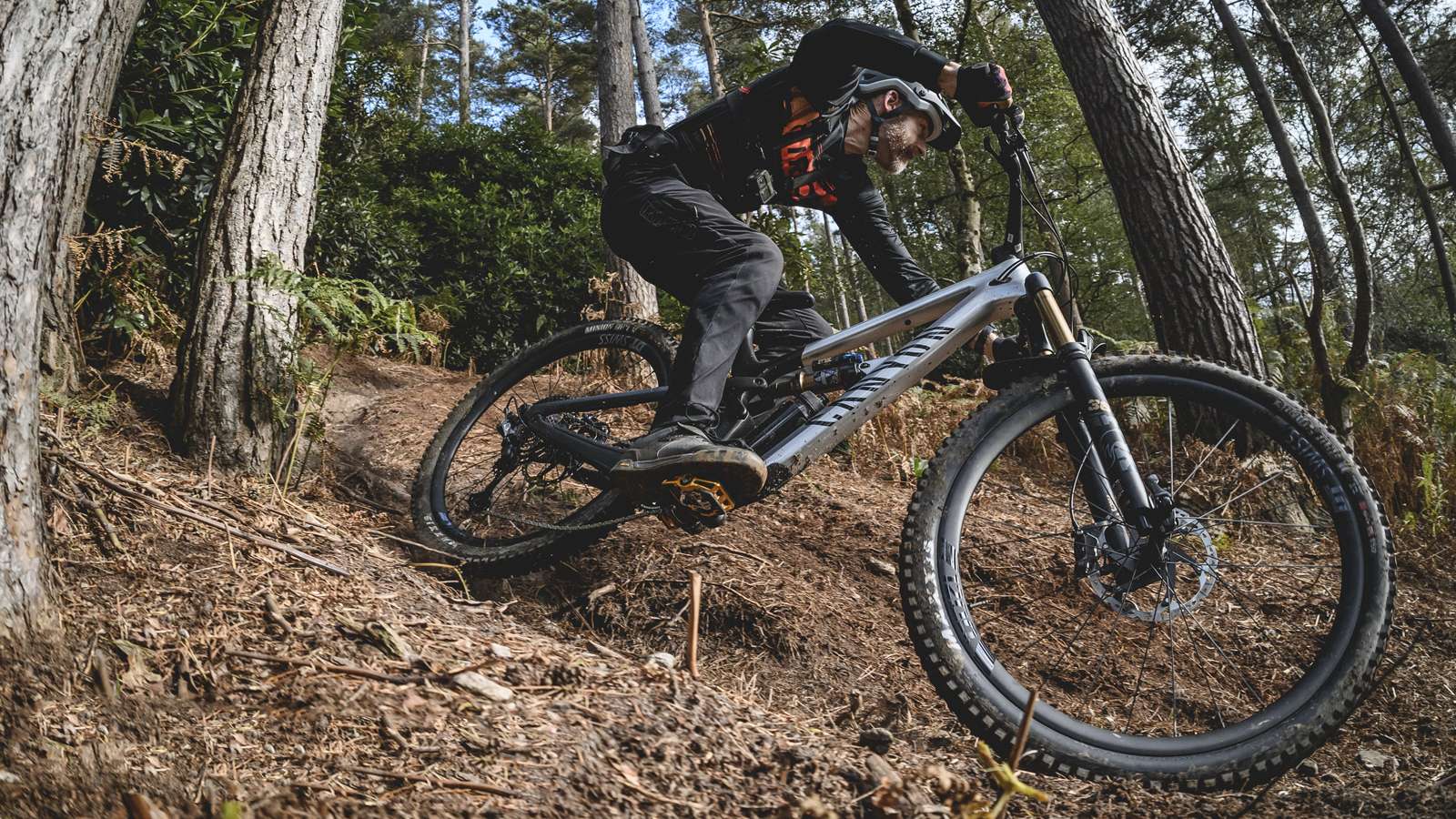
- Best full-suspension trail bikes
- 1. Best aggro trail all-rounder
- 2. Best for trail riding fun
- 3. Best for all day riding
- 4. Best for trail agility
- 5. Best steel trail bike
- Best full-suspension XC bikes
- 1. Best race bike
- 2. Best for rowdy courses
- 3. Best for cutting edge tech
- 4. Best for marathon racing
- Best full-suspension downcountry bikes
- 1. Best for racing
- 2. Best for aggressive riding
- Also consider
- Full-suspension bikes explained
With technology and design around suspension linkages and frame design constantly being refined, the best full-suspension mountain bikes have taken over all disciplines of mountain biking.
No longer reserved for gravity-orientated riders, we're seeing everyone from trail to XC riders adopting the best full-suspension mountain bikes as they offer a wealth of advantages including more traction, added comfort, and confidence when riding rough terrain.
Keep reading to find out our pick of the best full-suspension mountain bikes for three categories – cross-country, downcountry, and trail riding.
While these are the best full-suspension mountain bikes, you don't need to spend loads of money to get a great full-sus bike. If you are looking for great value bikes check out our best budget full-suspension bike guide.
Best full-suspension mountain bikes
Why trust BikePerfect
Best full-suspension trail bikes
As the way most of us ride and the places we go to get our fix have become increasingly extreme, trail bikes have been getting more confident, controlled and tougher. That inevitably means they've got heavier too, but as most of them pedal so well it doesn't matter. I've tested a ton of properly awesome all-round trail bikes in the past year too, which makes picking a top five hard. I reckon you can't go far wrong with any of these options though.
1. Best aggro trail all-rounder full-suspension mountain bike
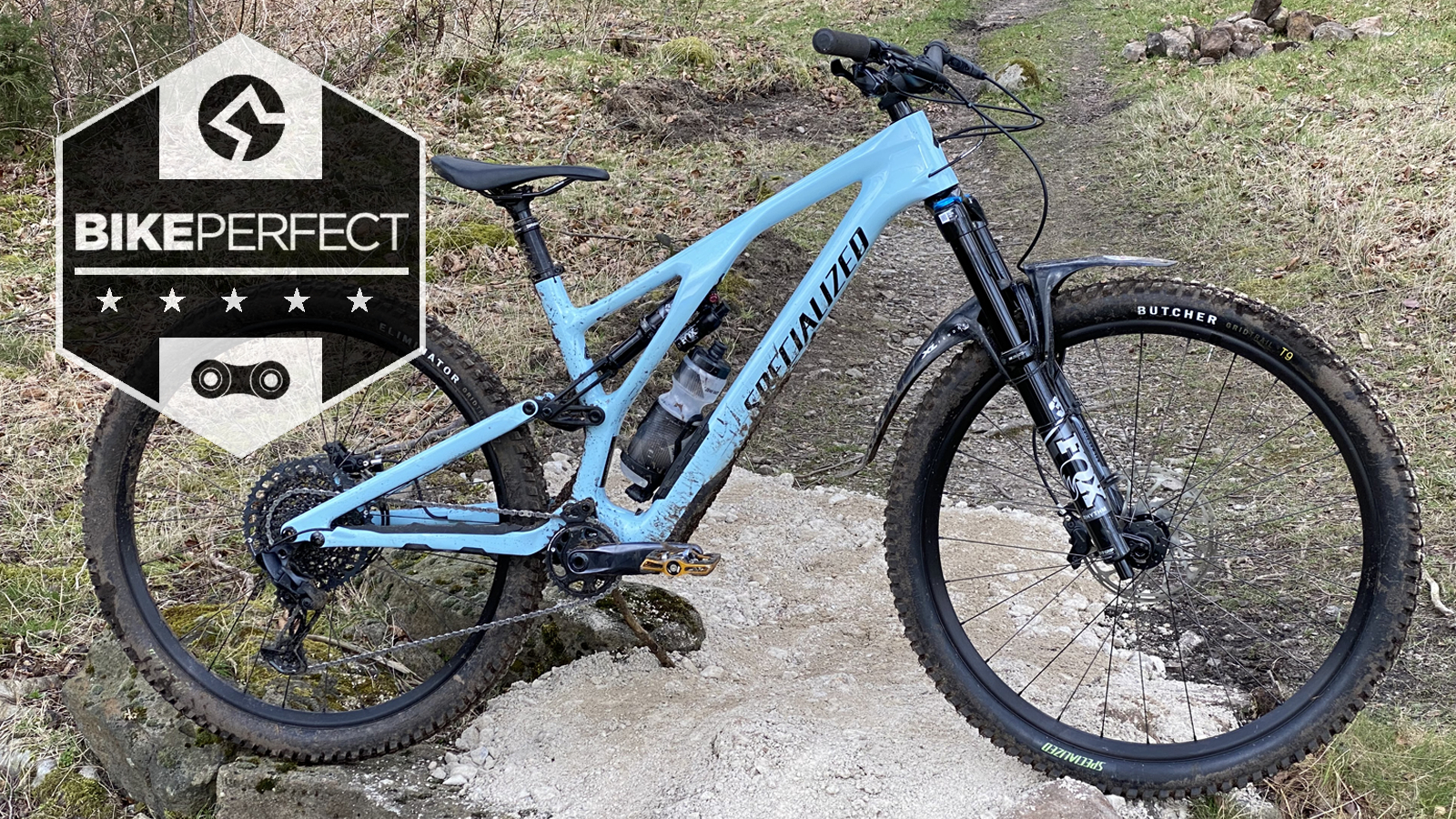
Specifications
Reasons to buy
Reasons to avoid
If you want to read a more sensible account of why the Specialized Stumpjumper Evo Comp is brilliant you should read my full review. But while I'm chained to a desk following an injury, here are some Stumpjumper Evo vibe vectors you might not find elsewhere.
Yes, there is an alloy bike and it's really good for all the same geometry adjust, plush suspension, and 'lovable like a labrador' reasons as the carbon one is. It's a win if you don't trust carbon either. It is a lot heavier though and you get both a hop up from SRAM NX to GX and the carbon frame for not much extra cash on the Comp. There's no storage either.
What makes the carbon Evo stand out though? The fact you can play around with the geometry in several ways just with an Allen key and a few trailside minutes is brilliant. You can produce some properly radical results with it too, rather than just correcting the numbers from outdated to OK like some bikes.
Specialized started the internal storage revolution and they still do it better than anyone else – I certainly haven't been able to fit three full-size sausage rolls into any other bikes. The whole bike from grips to tires is sorted as well and while they don't officially offer a lifetime warranty, Specialized customer service is ridiculously good.
While not everyone agrees with me, I reckon the Evo pedals better than the standard shorter travel Stumpjumper too. It's still a bit soggier in feel than the stiffest bikes in the category, but then FSR suspension always has been and you never have to worry about climbing traction on it.
Most of all though it's just a really fun, forgiving, and friendly bike to ride on every ride. Maybe not the sharpest or showiest, but one that'll show you a damn good time every time. It'll generally bring you home less battered afterwards too, so you're fresh to go again the next day. The fact it's still in my workshop as a go-to benchmark months after I posted the review is a big thumbs up too.
Check out our full review of the Specialized Stumpjumper Evo Comp.
2. Best full-suspension mountain bike for trail riding fun
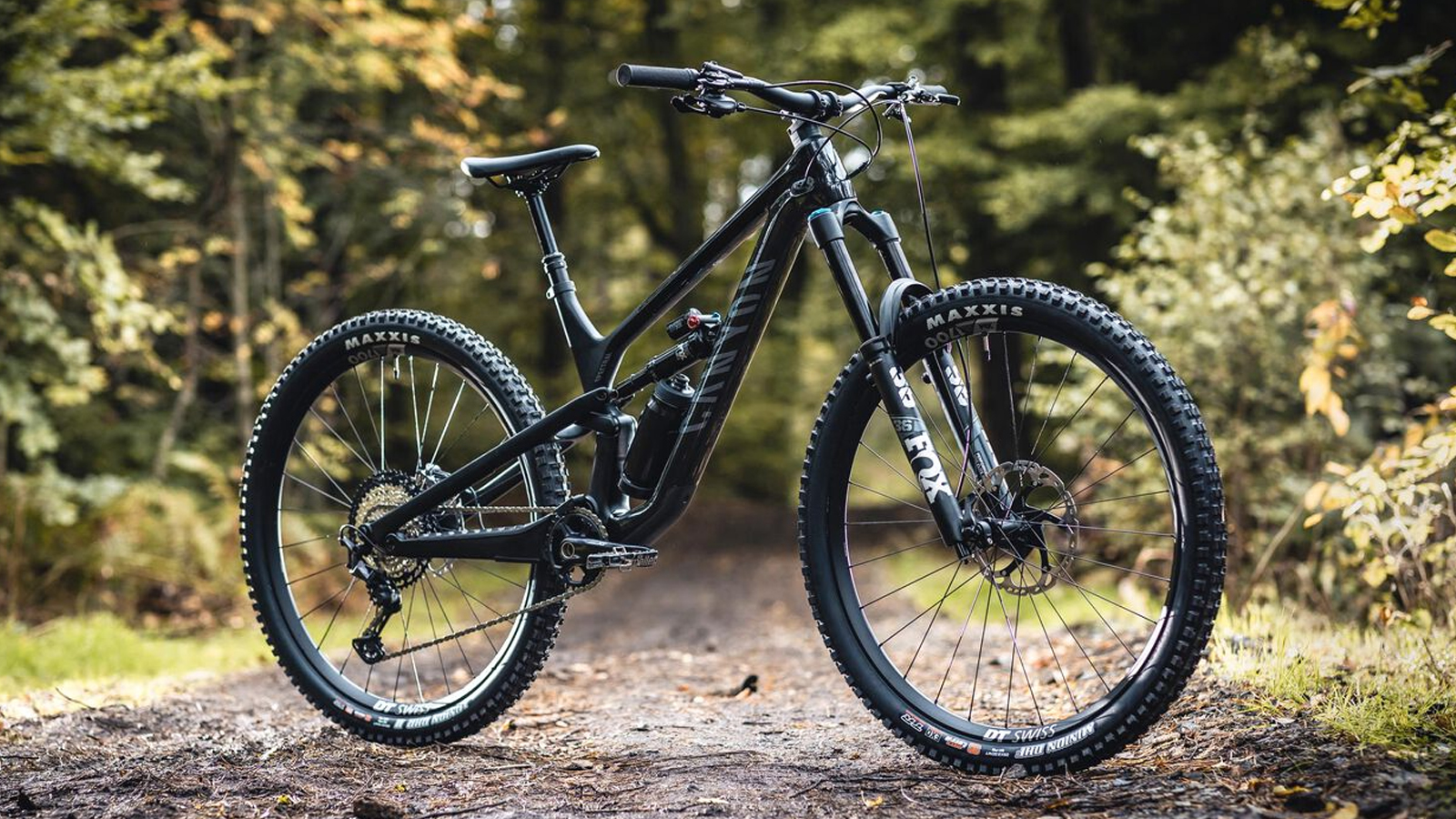
Specifications
Reasons to buy
Reasons to avoid
I've gone for Canyon Spectral 29 CF 8, but to be honest, any of the massive Spectral family could have made the 'best full-suspension bike' cut. That's because the fundamentals of really well-designed and detailed frames, totally sorted progressive geometry, and impeccably neutral four-bar suspension all loaded with killer value specs are the same throughout the range.
Having ridden the standard carbon frame in two different spec formats the significantly lower weight (lower than a lot of so-called 'downcountry' bikes) makes it worth stretching your wallet for. From what I've heard, the alloy bikes are still really well sorted though and at the price they start they're pretty much unbeatable in terms of ride and features.
As well as a huge range of price points – from Shimano entry-level to SRAM Flight Attendant auto suspension – there are different wheel, frame and travel options under the broader Spectral umbrella too. The mullet wheel, coil-shock bike is perfect if you've got hero corners to slash. The shorter travel Spectral 125 is great for those who want more pop than plush too. You're not gaining any advantages in terms of weight though so the fancy frame CFR option is the win if you've got the cash for a proper, premium trail racer.
Even that's a comparative super bargain though, but don't forget a lot of that money is saved by skipping the expensive shop bit and sending you your Spectral in a box. Just like everything else Canyon, it's a nicely designed box though.
For more, see our full Canyon Spectral 29 CF 8 review.
3. Best full-suspension MTB for all day riding
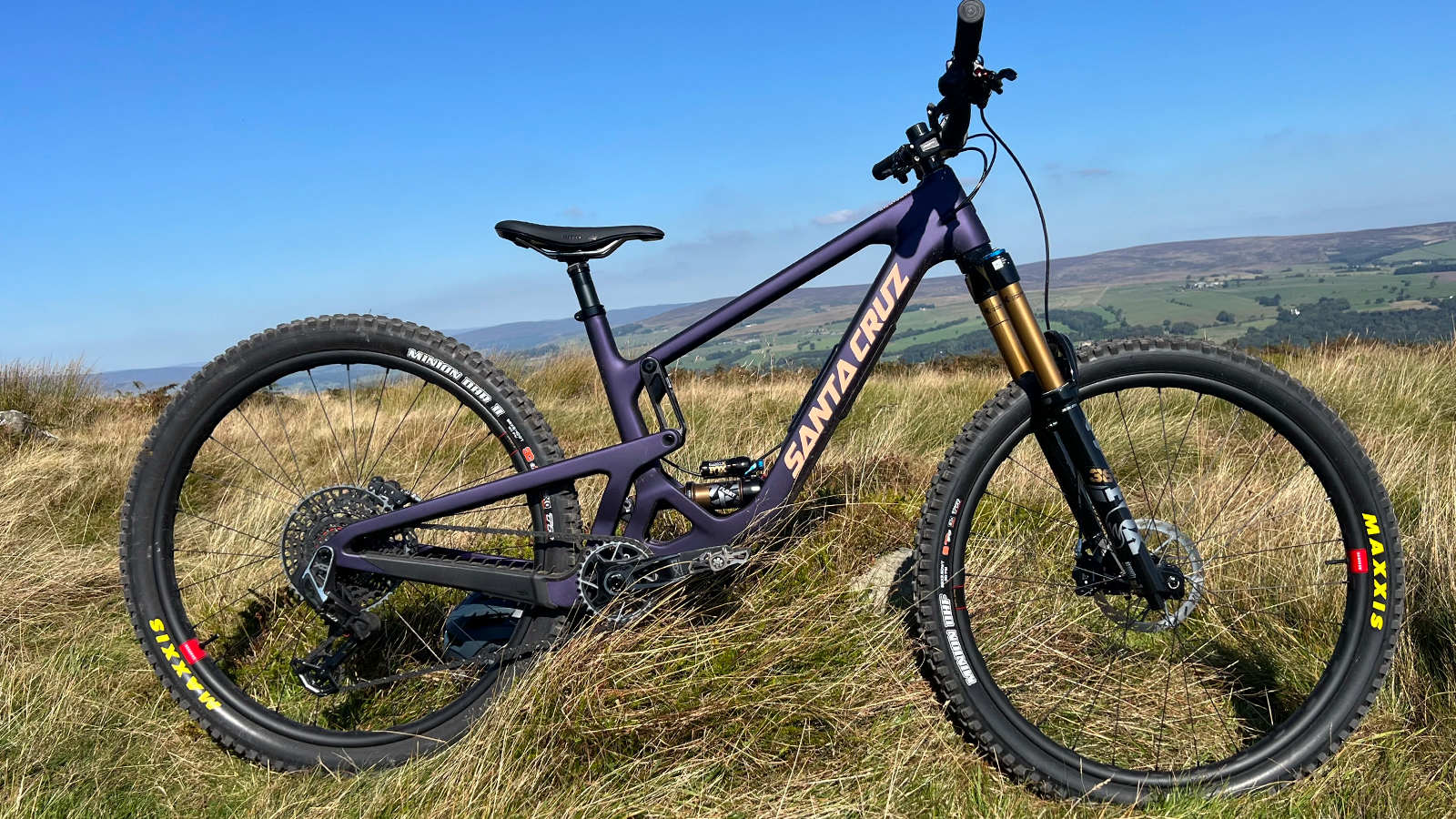
Specifications
Reasons to buy
Reasons to avoid
The fourth generation Santa Cruz Hightower has landed and it has more suspension travel than before with 10mm extra up front and 5mm at the rear. The geometry is a touch more progressive too with a slightly slacker headtube, longer reach, steeper seat tube and longer back end. Existing fans will be pleased to hear that while concessions have been made to increase the Hightower's tough trail capabilities, it's still a top option for all-day riding. The latest model may now have the same suspension travel as the also recently relaunched Santa Cruz Bronson, but that has a far more aggro setup.
Santa Cruz's in-house VPP (Virtual Pivot Point) suspension setup has been tweaked to give better suspension performance while pedaling and braking. As part of this process, the Santa Cruz design team scooped out the bottom of the downtube and BB area so the shock could sit as low in the frame as possible, reducing anti-squat and anti-rise.
After testing the latest XO AXS RSV version, our tech editor, Guy Kesteven said: "The new Hightower is hungry for the ever faster and rowdier direction mountain biking is increasingly heading in, but can still climb like a goat and haul ass through the pedals."
For more, see Guy's full Santa Cruz Hightower XO AXS RSV review.
Santa Cruz's latest Hightower is longer, slacker in the head, steeper in the seat and comes with internal storage where you can keep the massive sense of totally predictable progression.
Yes, as a cynical old sod, I wasn't expecting to be that blown away by the new version of Santa Cruz's 29er all-rounder. Mainly because the old one was already my benchmark of how good a mid-travel (150mm front/145mm rear) 29er could feel. And like most other evolution models from most other brands, I didn't think a door to a secret store was really worth more weight and a £1000 price hike.
"Ha," said Santa Cruz and immediately set about making me look like one of those reviewers who doesn't bother to weigh things or think of the consequences and realities of paying nearly 10k for a "push bike". The fractionally shifted, smaller pivot kinematic of the VPP suspension whispered sweet nothings in my ear. I'm not going to go into how the new RockShox Super Deluxe shock produced an ecstatic "oh yes" from me, but I can tell you every click of that spring-detented, low-speed compression dial does something really special.
The slightly altered handling told me how incredible I was every time I held off the brakes a little bit longer or tipped the bars into corners a bit deeper. The boxier carbon frame, perfectly shaped Santa Cruz bars and bulge-reinforced Reserve carbon rims told me their no-quibble lifetime warranty didn't matter because the way they rode made me feel invincible anyway.
And when I clicked the sweetly over-engineered catch on that internal storage it wasn't just like opening the door on a top-spec German whip. It was like I was important enough for someone to be opening my car door for me.
So, whether you get it from these utterings or you still need to read the full Santa Cruz Hightower V3 review, if you've got a pile of cash or a robust lack of financial responsibility, the Hightower is the 'super trail' all-rounder to beat right now.
4. Best full-suspension mountain bike for trail agility
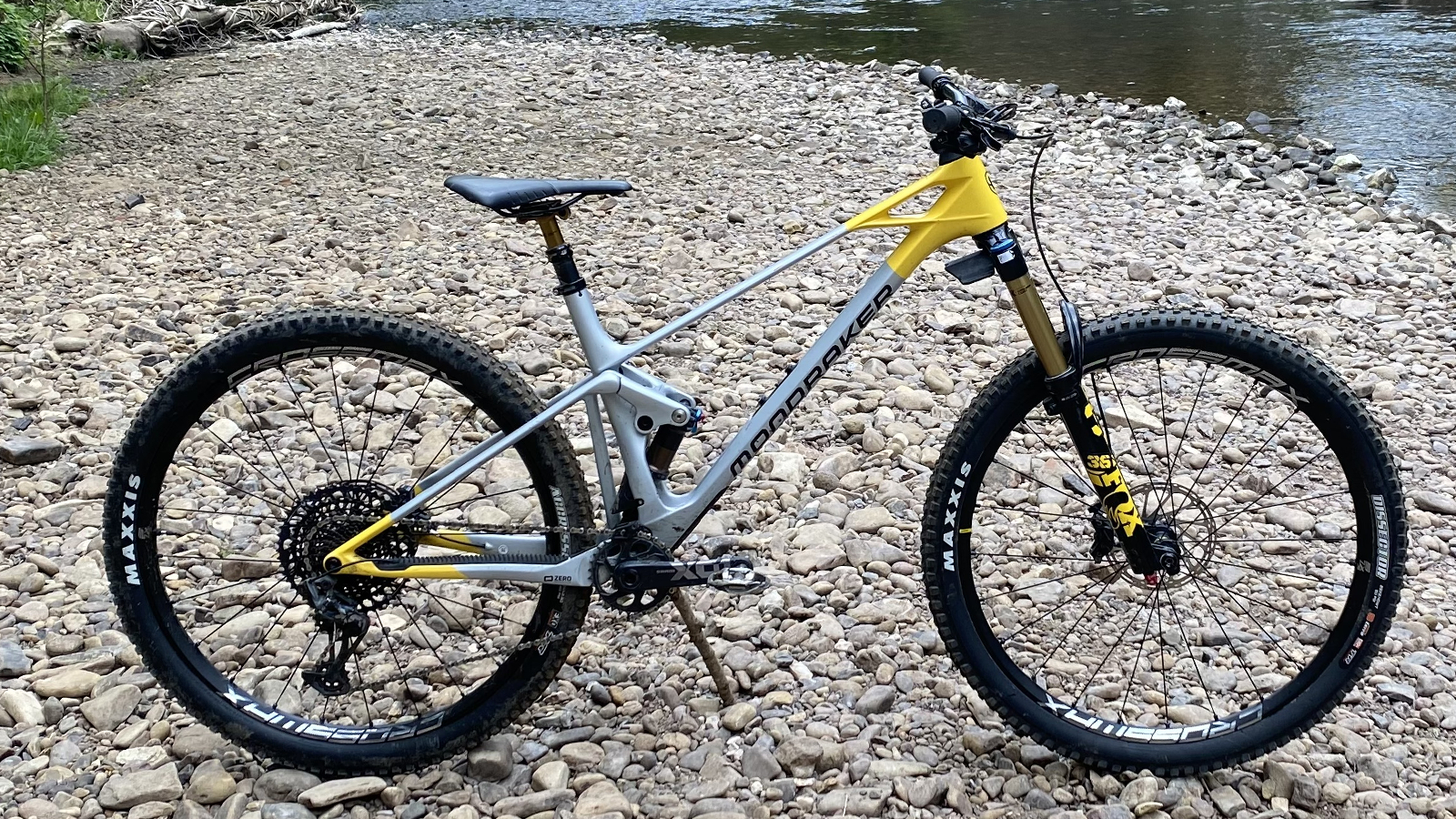
Specifications
Reasons to buy
Reasons to avoid
Mondraker brought the super short stem, long reach stability geometry revolution to the mainstream with their Forward Geometry bikes. The Raze is their latest expression of that rebellious responsiveness with a super lively lightweight carbon frame and 150mm front, 130mm suspension split.
What sounds like a wonky amount of travel works well to encourage you to attack with the front wheel as much as possible. That's because it's when the Raze geometry is at its best and Mondraker even fits a reinforced front tire but not a rear one to reinforce the point.
The stunningly looking slimline frame not only looks fast standing still. It feeds into the 'grab the trail by the throat' vibe with a sinewy, feel that snakes and swerves through trouble while laying down awesome traction. The race-honed Zero suspension gets extra setup assistance via the wireless MIND travel tracking sensors front and rear too. That makes the Raze RR a live wire both technically and in terms of ride character. And while not everyone will need that level of tech or want that much in your face, synapse reactive responsiveness deserves a shout-out as something special.
Guy had this to say about the Raze's handling when he reviewed it, "despite so many bikes following much of Mondraker's pioneering geometry lead, it has managed to keep its signature ride character deliciously distinctive. The light, lithe, perfectly imbalanced suspension of the Raze RR makes it a proper ‘chef’s special’ in terms of accentuating that agility and inherent ‘skill gifting’ to the maximum."
For more, check out our full Mondraker Raze Carbon RR review.
5. Best steel full-suspension trail bike
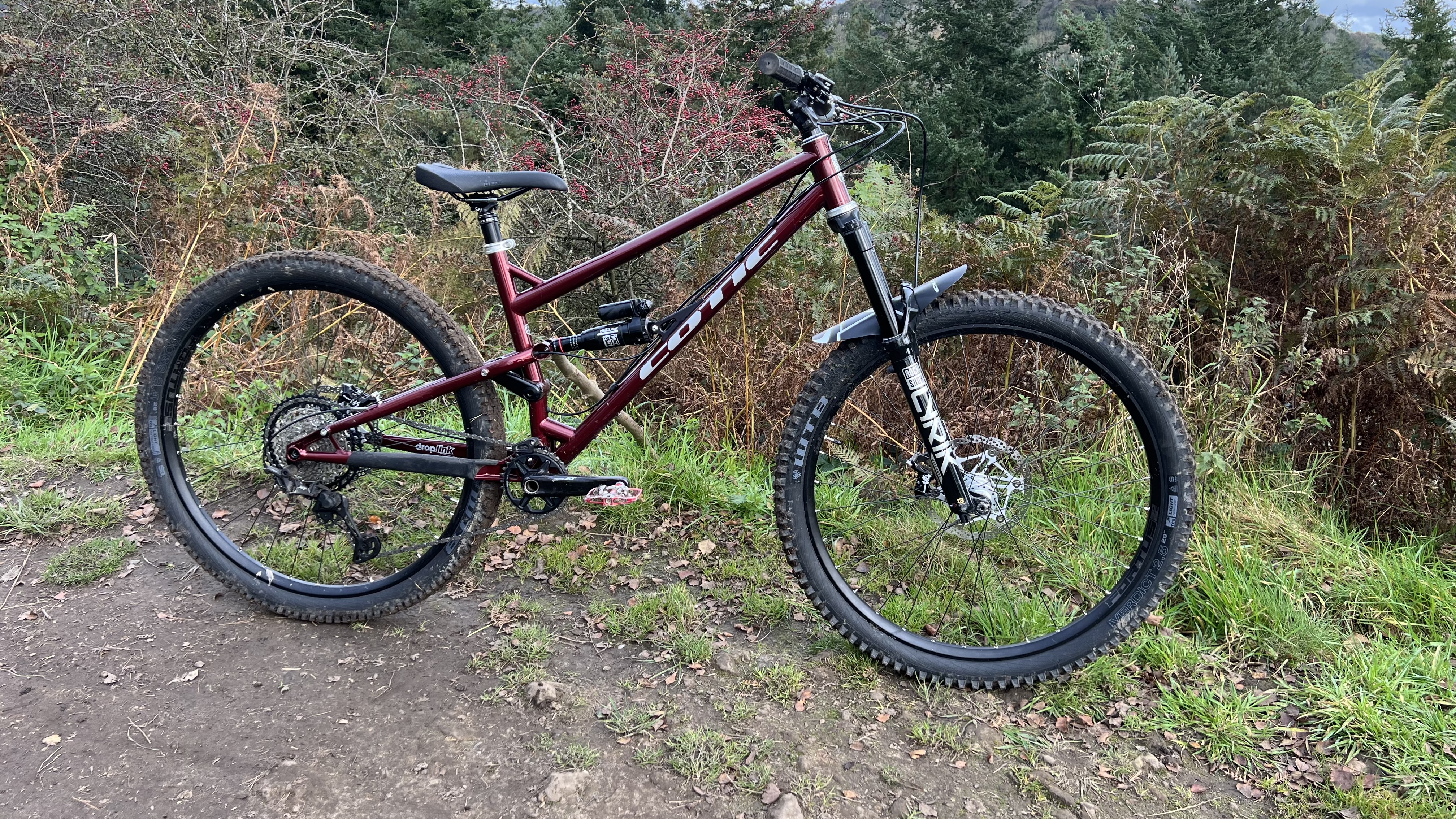
Specifications
Reasons to buy
Reasons to avoid
You're probably not surprised to see carbon bikes from a string of mega brands filling this best-of-guide. Steel from a small outfit near Sheffield UK though? Really?
And yes, the ferrous alloy is heavier than fiber composites by an average of a kilo for same-category bikes. You won't get the same stiffness as a big box frame and it doesn't scream 'Look how much I've spent on all this tech' either. The carefully curated steel tubes of Cotic's mid-travel trail machine add a subtle spring and flow that's almost impossible to weave into a composite, shape into an alloy tube, or dial into a damper though. Ovalisation and oversizing where it matters still means the Jeht 2 can place its front wheel perfectly and drive its rear wheel powerfully too. The latest Longshot geometry is confidence-boosting without killing the visceral, responsive vibe of the frame.
A whole range of build specs and rolling chassis options offer surprisingly good value for a small company and Cy and his team will work with you to create any custom of partial build solutions you want too.
Guy has spent a load of time on the previous Jeht and was even more impressed by the latest Jeht 2. "Its notably quiet and damped vibe underlines how hard you can push the latest Jeht on the most challenging trails and it’s certainly got the chops to go head-to-head with the most hardcore bikes in any material now."
For more, see our full Cotic Jeht 2 review.
Best full-suspension XC bikes
The top racers in the world used to all ride hardtails for minimum weight, but tougher courses mean the fastest riders are now choosing the best full-suspension bikes instead.
The great news is that it’s creating some really versatile high-velocity, short-travel machines that are as happy raving on your favorite singletrack as they are ripping up the race track. But which are the winning machines and what do you need to know to work out which is the best bike for you?
1. Best full-suspension XC race bike
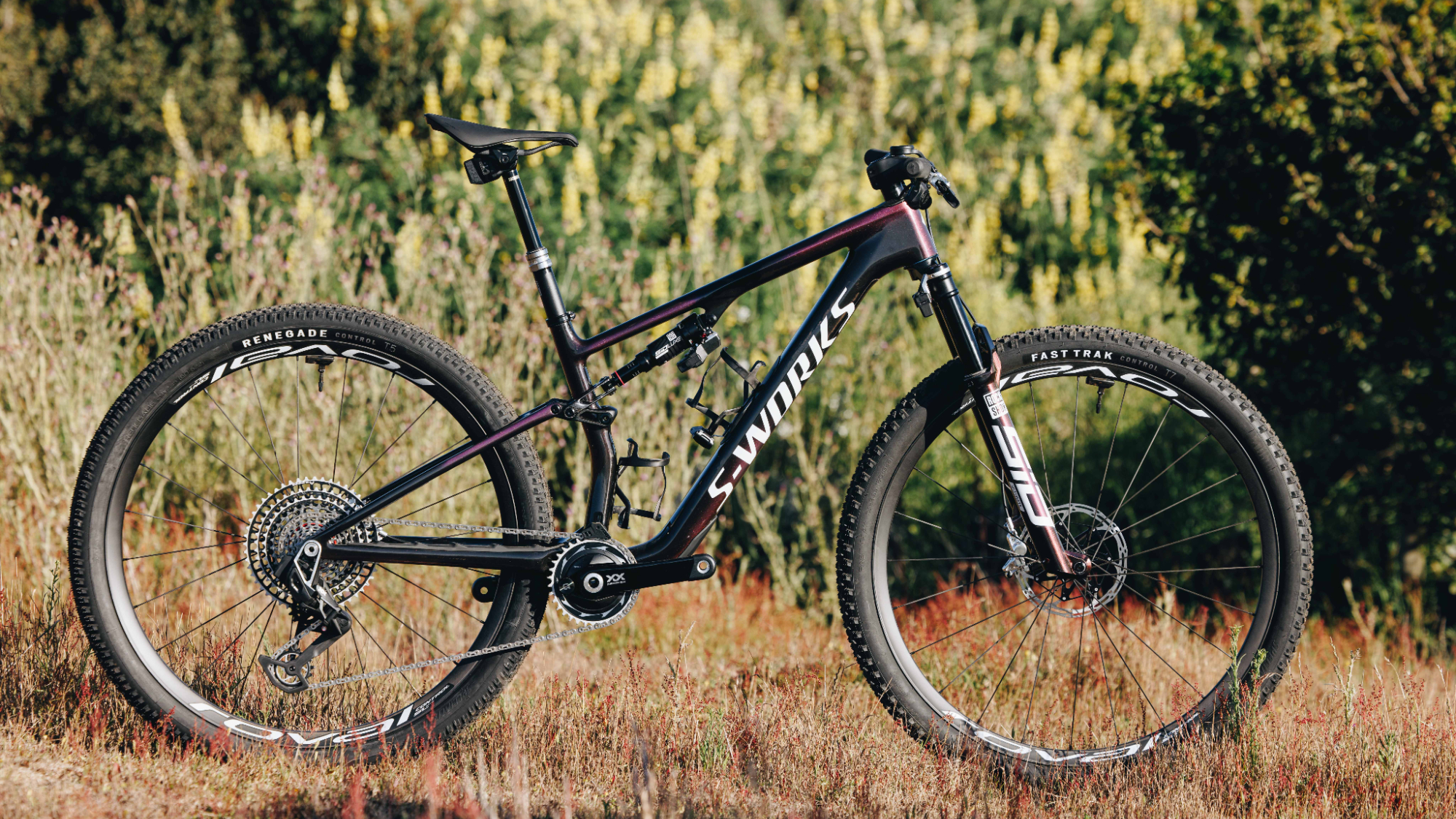
Specifications
Reasons to buy
Reasons to avoid
The latest top-of-the-line Specialized S-Works Epic 8 is the first bike to feature SRAM's XC-suspension Flight Attendant AI-controlled system (the trail version has been around for a while). The new XC system controls the RockShox SID fork and SIDLuxe shock with inputs from the trail and a Quarq XX SL power meter fitted to the cranks. The system works brilliantly and gives you the best level of suspension support for whatever the trail throws at you.
Suspension-tech aside, the real star performer is the new Epic 8 frame. It's more progressive than before and totally sorted geometry-wise, which allows for all sorts of rowdy riding, but on a bike that XC light (frame-weight is a claimed 1,795g with the shock and hardware) that's super responsive and race-ready.
As you might expect, on the S-Works build, it's a list of top spec kit. The bike runs on Roval Control Wheels weight under 1,300g, a Roval SL one-piece carbon cockpit and carbon rails on the Body Geometry S-Works Power saddle help keep minimum weights elsewhere too. Drivetrain-wise, it's SRAM's race-spec Eagle AXS XX SL T-Type Transmission and you get a 150mm drop RockShox Reverb AXS seatpost also operated by the AXS shifter Pods.
After testing the bike, our technical editor, Guy Kesteven, summed up the S-Works Epic 8. "Specialized has thrown down a very impressive, maximum velocity benchmark with the new Epic 8. And I also really like the fact that still applies whether you buy the ultra high-tech S-Works tested here as the ultimate race machine, or get the basic Comp model as an excellent way to just go further and faster with or without a number on."
For more info, see his full Specialized S-Works Epic 8 review.
2. Best full-suspension XC bike for rowdy courses
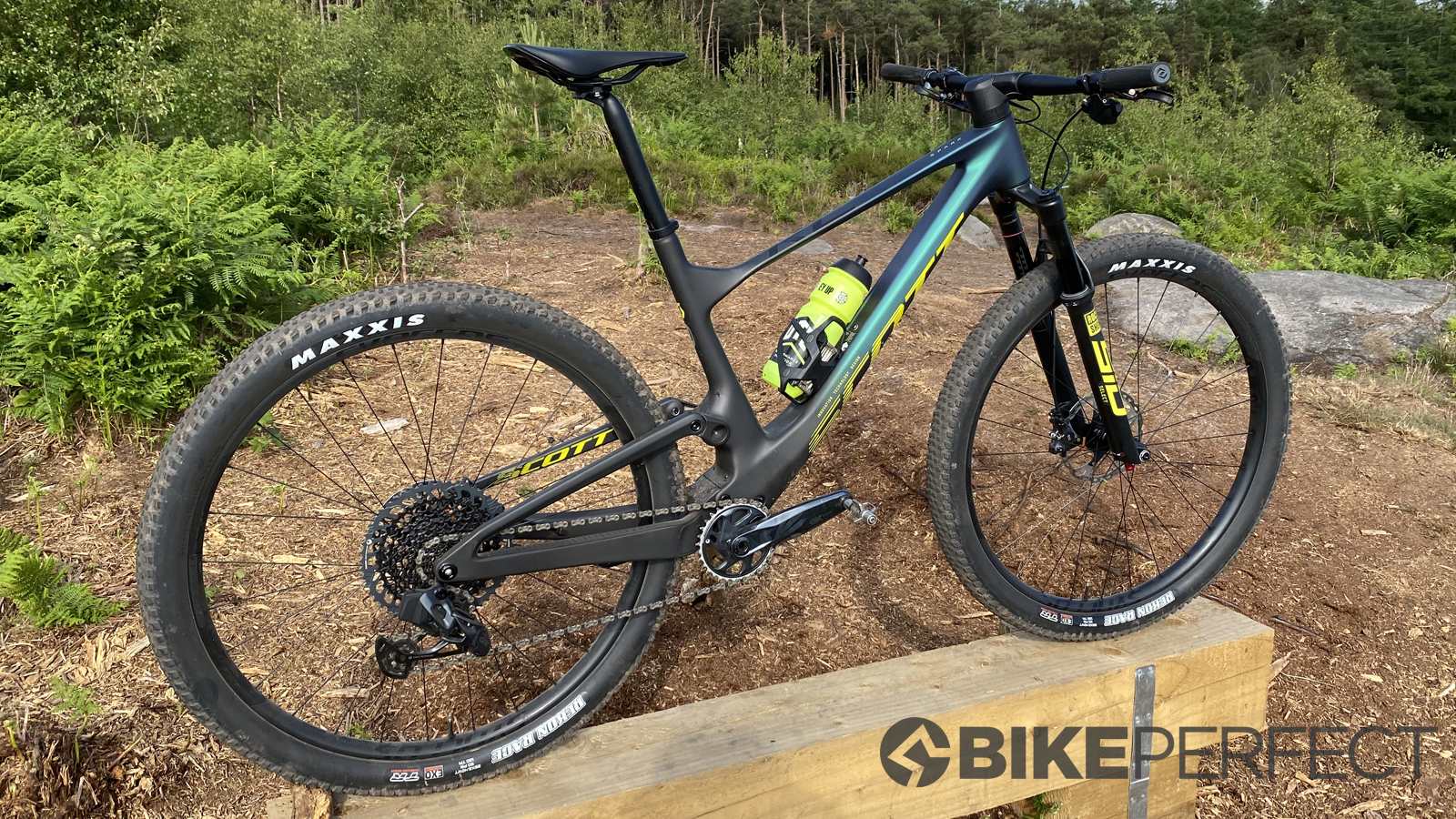
Specifications
Reasons to buy
Reasons to avoid
The Scott Spark is by far the most successful cross-country race bike of the last decade, and the latest model is faster, more controlled, and uniquely sleek looking too.
The most obvious change is that Scott has hidden the rear shock inside the frame so that it's not exposed to the elements. The brand has also bumped up the rear suspension travel to 120mm on all Spark models, not just the downcountry/trail ones. The already progressive, control-boosting geometry can also be made a degree slacker in just a couple of minutes on the trailside which boosted my confidence when I was testing it.
The Team Issue AXS is a real sweet spot in terms of value for racers too. The excellent RockShox SID fork and Deluxe rear shock suspension feature bar lever controlled open, traction, and lock settings for maximum efficiency. The SRAM GX Eagle AXS electronic drivetrain is flawlessly fast and you get the superlight Syncros Hixon all in one carbon cockpit. The Syncros Silverton wheels are light too and Maxxis Rekon 2.4in tires roll super fast while staying rocky section safe.
Guy spent most of his testing time on the Scott Spark hustling trails at e-MTB speeds and had this to say about Scott's XC bike. "A narrow flat bar, downturned stem, and fixed seat post confirm that the RC is a racer at heart, but it’s a brilliant example of just how far race bikes have come in terms of capability, confidence, and big-grin speed.
Read more about the Spark in our full Scott Spark Team Issue AXS review.
3. Best full-suspension XC bike for cutting edge tech
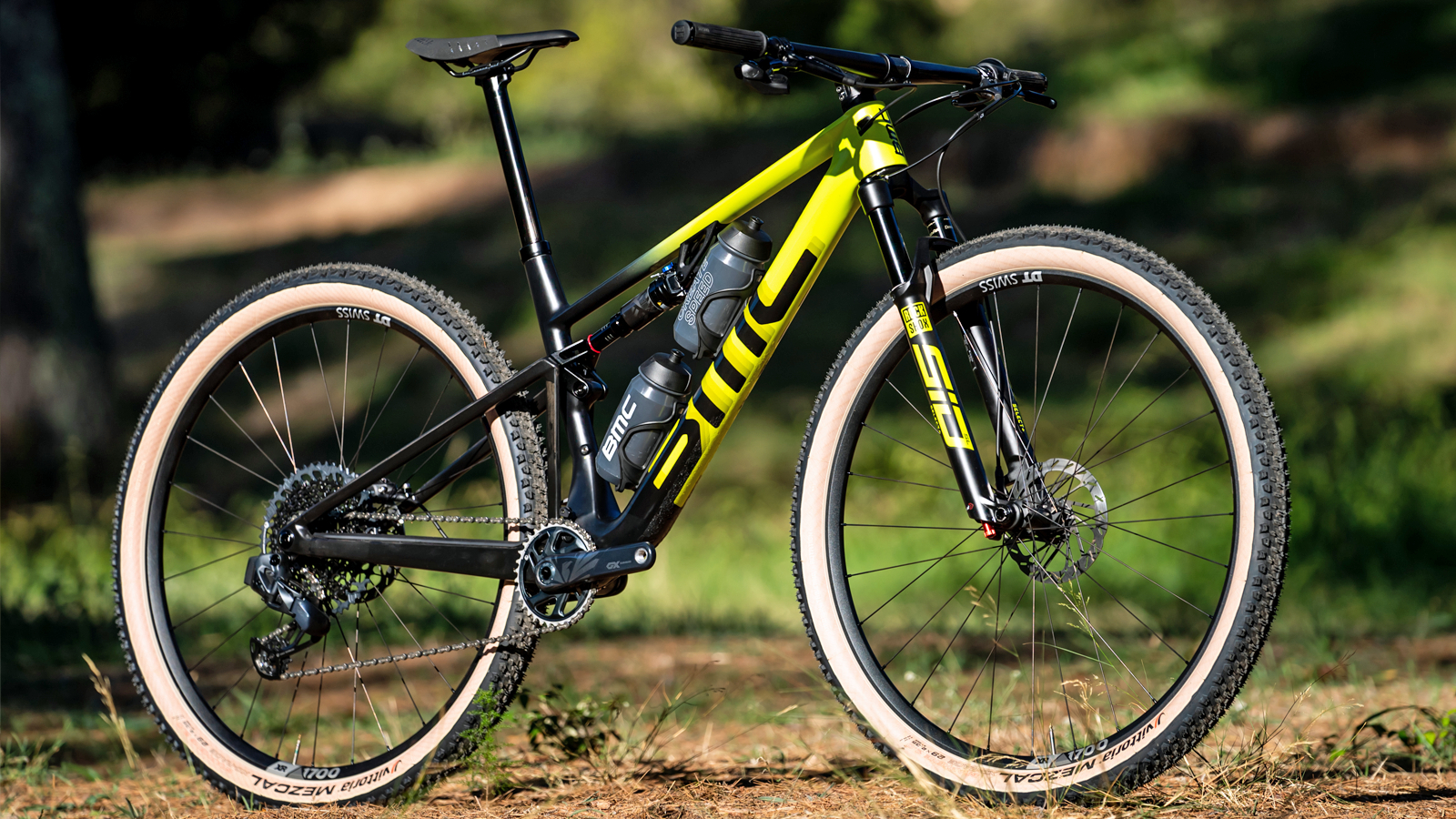
Specifications
Reasons to buy
Reasons to avoid
If you're looking for a cutting-edge XC bike then few come close to the BMC Fourstroke 01. BMC's latest race bike features aggressive and progressive geometry, triple mode shock control, and most significantly BMC's Airdrop seatpost.
The geometry is pretty radical and wouldn't look all that out of place amongst the best trail bikes. The slack 66.5-degree head angle, short 432mm, and low 53mm bottom bracket mean the Fourstroke feels simultaneously planted and maneuverable. When it got updated, BMC completely changed the Fourstroke's frame layout too, squeezing in two inline water bottles alongside a new horizontal-orientated APS suspension system.
The big talking point around the Fourstroke 01 frame is BMC's Airdrop technology. Previously BMC used a RAD-integrated dropper post, they have now gone one step further by integrating an air chamber in the downtube which compresses the dropper post without the rider sitting down. It seems like a small detail however it potentially saves a lot of rider energy throughout a race and makes it easier to get the saddle out of the way on technical undulating segments.
Graham was lucky enough to test the BMC Fourstroke 01 on the challenging French Tokyo Olympic test track and was impressed by the Fourstroke 01's performance. In his first look, he says "Riders who want a super capable, confidence-inspiring XC bike are going to love the Fourstroke. It's agile and punchy with no loss of composure when the trails get rough assuming you stay within the remit of the fork.
You can read more about the unique Airdrop technology in Graham's BMC Fourstroke 01 TWO first ride review.
4. Best full-suspension XC bike for marathon racing
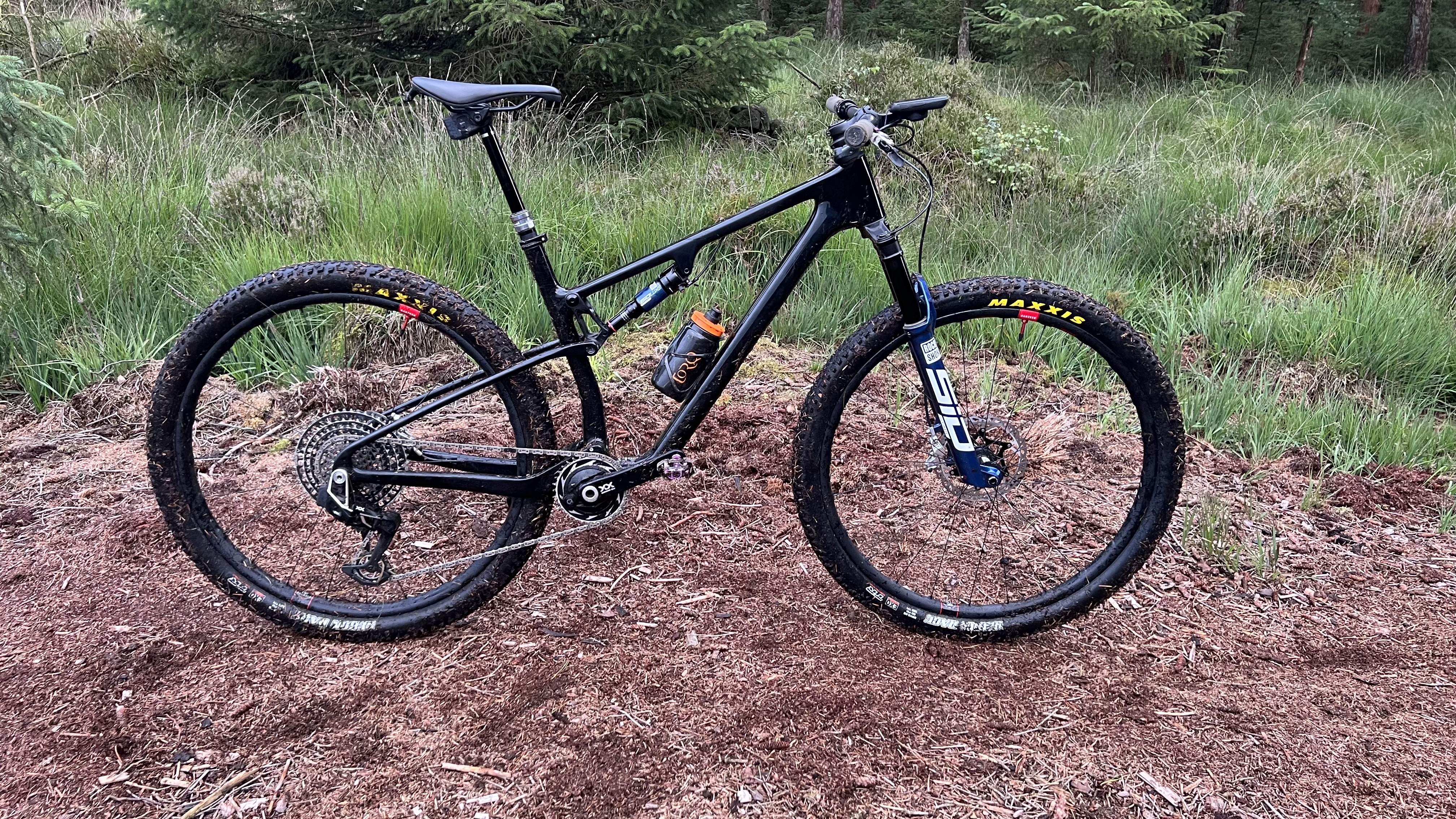
Specifications
Reasons to buy
Reasons to avoid
In the past road brands that have made the jump to off-road haven't always been all that successful. However, Cervelo has done an excellent job with their ZFS-5, producing a lightweight, fast, and capable XC bike.
The ZFS-5 packages a lot of our favorite features from the other XC bikes on this list. It features suspension characteristics from the Santa Cruz Blur (which is under the same Pon group corporate umbrella), similar geo and low weight as the Specialized Epic Evo, and the same 120mm travel and triple mode shock control as the Scott Spark.
Whether that was a culmination of extensive testing or a paint-by-numbers exercise doesn't matter, the Cervelo is a hyper-competitive XC bike.
Guy Kesteven spent a few months testing the bikes and had this to say about it. "The ZFS-5 is superlight with a beautifully balanced frameset feel and pedaling/control suspension character for effortless climbing and race reaper/distance shrinker speed. Slack head angles are combined with compact reach to create an aggressive but agile ride that rewards dynamic riders brilliantly and can be pushed surprisingly hard in savage situations too. It won’t autopilot you out of every mistake though so it’s still XC rather than DC at heart, even in the longer travel format."
It was good enough for him to award it full marks too, to find out more check out the full Cervelo ZFS-5 frame review.
Best full-suspension downcountry bikes
With trail bikes getting heavier and longer travel all the time, a new breed of agile, responsive but still impressively controlled and fun to rally 'downcountry' bikes have appeared. There are lots of bikes that claim to be in this category but are too heavy or slow though, so we've picked our favorites carefully.
1. Best full-suspension downcountry bike for racing
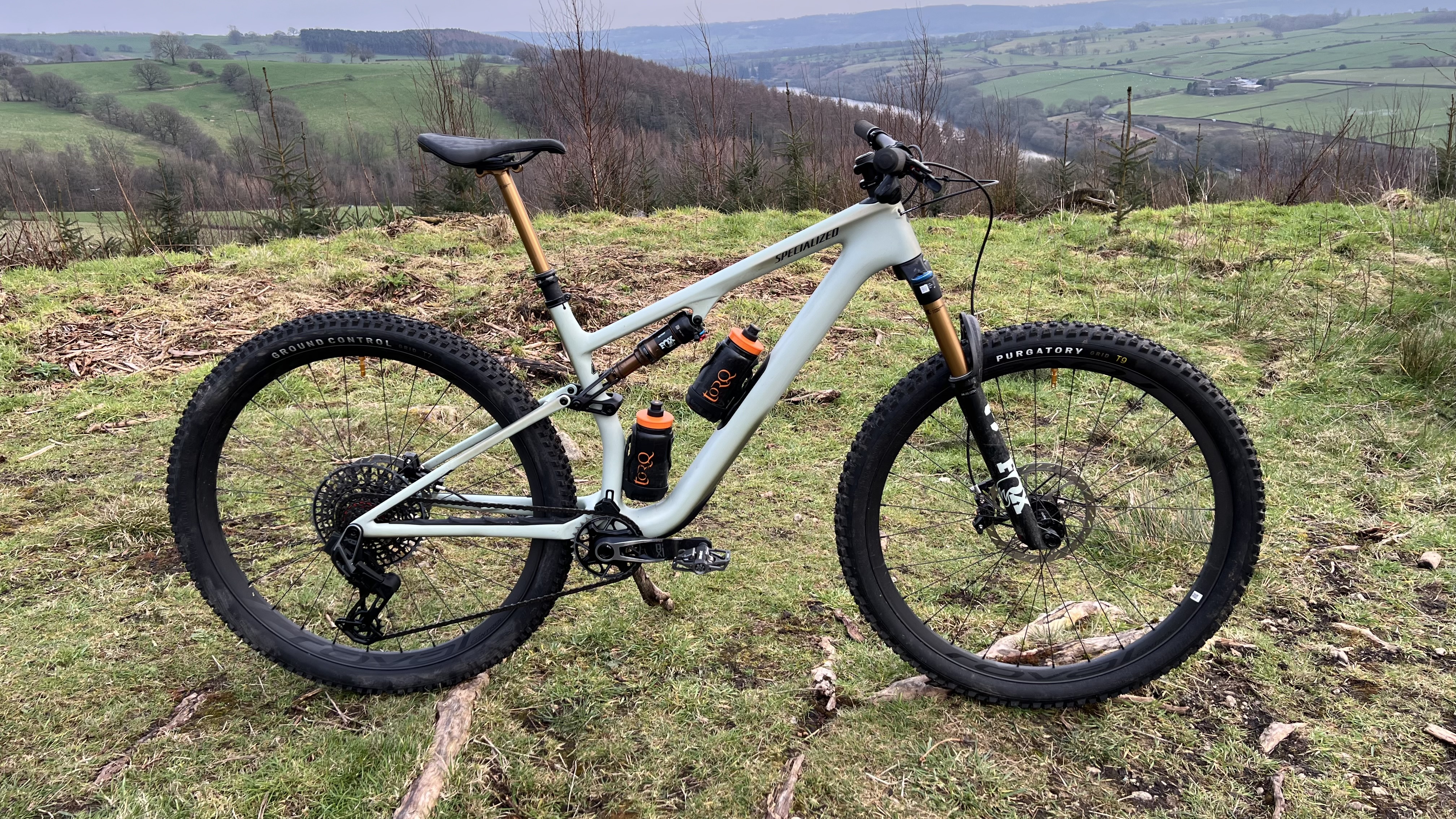
Specifications
Reasons to buy
Reasons to avoid
The Epic 8 Evo runs the same frame as the top-of-the-line S-Works Epic 8 XC version, but it's equipped with more suspension travel for tougher downcountry trails.
The suspension is bumped up to 130mm fork and 120mm of rear travel. That comes in the form of a Fox pairing of 34 Factory Grip2 fork and a Float Factory EVOL shock. Wheels are Roval Control rims on Industry Nine 1/1 hubs, shod with Specialized Purgatory Grid T9/T7 tires. The gears and drivetrain are SRAM's Eagle XO AXS, T-Type Transmission, everything is brought to a halt with four-pot SRAM Code Stealth Silver brakes with 200mm and 180mm rotors for controllable stopping power.
The Epic Evo 8 proved itself to be more capable than ever in our testing. The longer and lower frame geometry can seriously challenge beefier bikes on tougher trails. Generally, it's around a kilo lighter than those bikes too, so feels much livelier and leaves them eating dust when sprinting or climbing.
The only serious downside is that the Epic 8 Evo's extra capability means it's also about a kilo heavier than the last incarnation, so if you're after a lighter bike, the non-Evo Epic 8 is likely to be the one for you. Rear tire clearance maxes out around 2.35 inches too.
Guy Kesteven tested the bike for us and was seriously impressed: "The new Epic Evo is perfect for the increasing category of riders who want full trail attack capability, but with the agility, punch and efficiency that gives the kind of climbing and acceleration gains you’d otherwise have to get an e-bike to unleash."
For more, see his full Specialized Epic 8 Evo Pro review.
2. Best full-suspension bike for aggressive downcountry riding
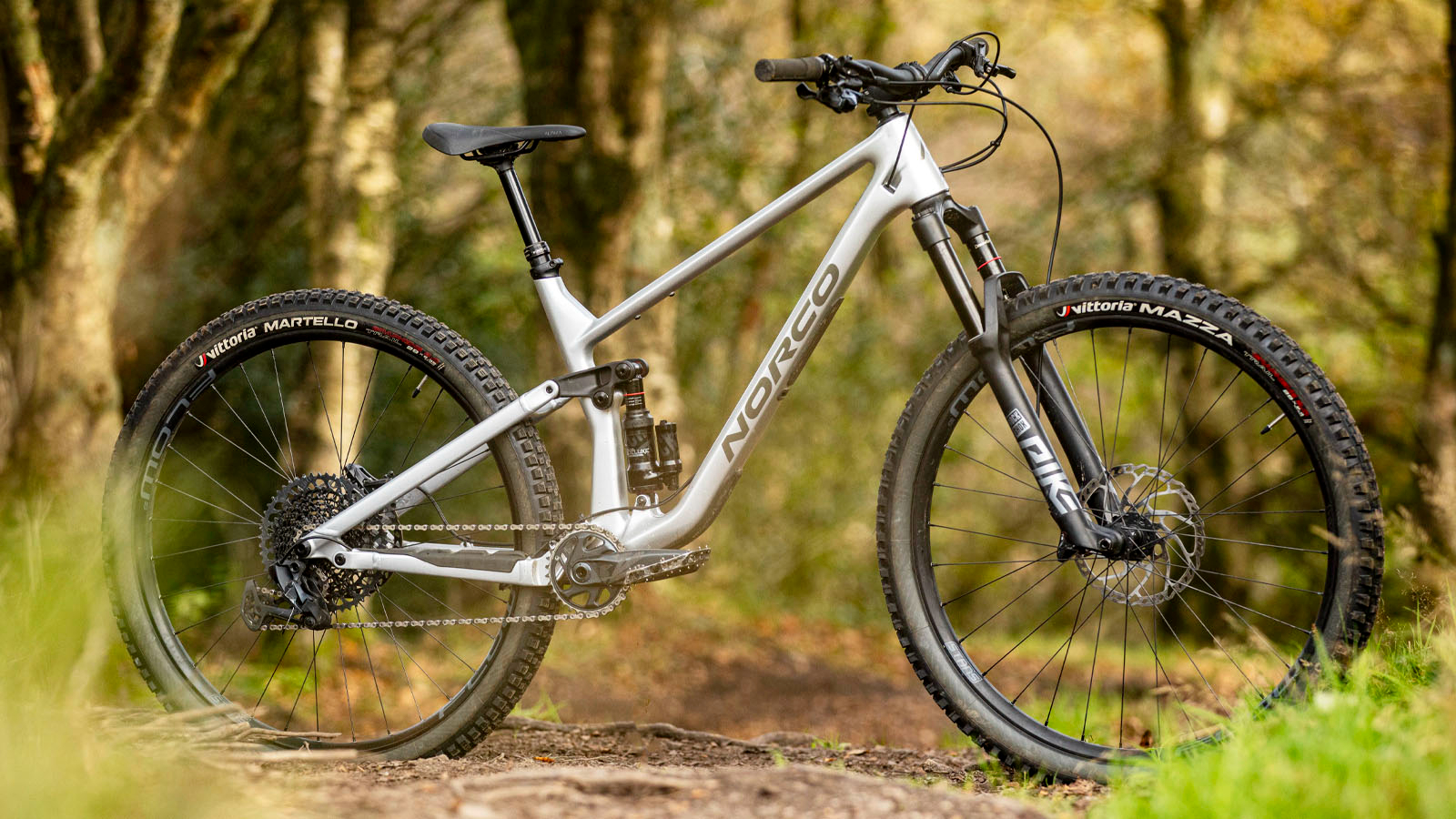
Specifications
Reasons to buy
Reasons to avoid
There is still some debate about whether a downcountry bike should be a slackened and sturdy cross-country bike or a short-travel lightweight trail bike. Norco's C2 falls into the latter with its 65-degree head angle and downhill spec suspension making it feel like the proper downhillers’ trail bike.
The combination of 140mm RockShox Pike and 125mm SuperDeluxe Ultimate, backed up with burly spec items like Stan’s enduro-level Flow S1 wheels means you can confidently attack technical trails with precision and feedback that can be lost with the best enduro bikes.
Mick Kirkman didn't feel like the Norco's short travel held it back at all, stating in his review that the "bike straddles the tightrope of travel and technical capability just about right. For sure, the absolute limit of hard-charging and still expecting to grip/get away with it is slightly lower than with a 170mm bike’s worth of get-out clauses, but that adds extra excitement, pump, and pop, and while the Optic is constantly stimulating senses through palms and soles, it rarely gets so edgy you can’t hammer along and push your limit."
For a full review of this short travel shredder, check out our Norco Optic C2 SRAM review.
Also consider
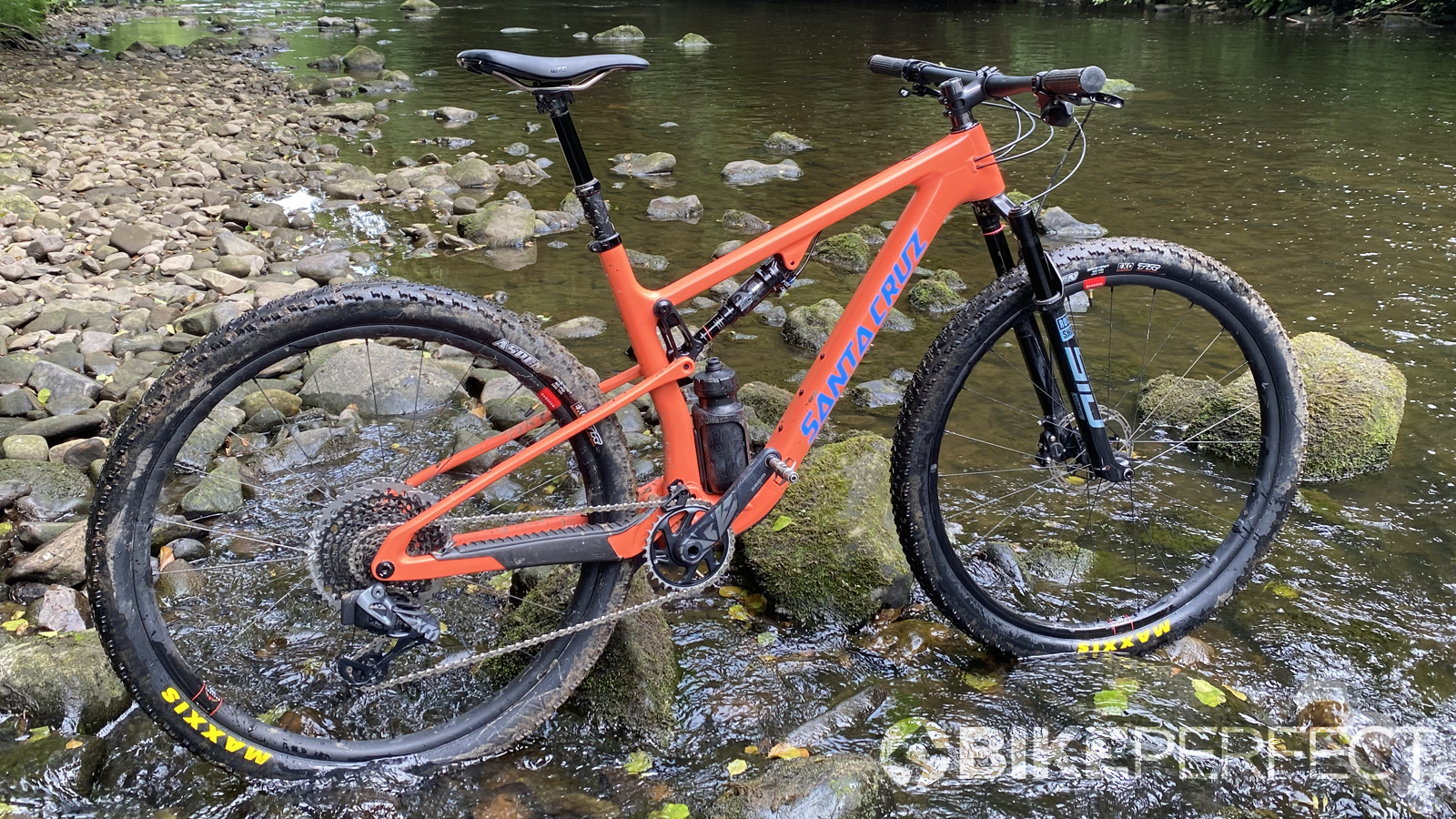
Specifications
Reasons to buy
Reasons to avoid
Santa Cruz hasn't had a proper podium-focused full suspension XC race bike in their lineup for years but the fourth-generation Santa Cruz Blur impressed me so much that I awarded it five stars in my full review.
For the new Blur, Santa Cruz strived to combine XCO-race-worthy speed with the brand's signature handling that can be found on its range of popular trail bikes. New to the frame is a flex in the seat stay as well as a new suspension design that diverges from the brand's usual VPP setup. The suspension features 100mm front and rear, and there is a 120mm TR version of the bike available too.
RockShox SID suspension front and rear are combined with SRAM's X01 Eagle AXS wireless drivetrain along with SRAM Level RSC brakes. Lightweight carbon rims are specced from Santa Cruz's in-house wheel brand Reserve and a 100mm Fox Transfer SL dropper post is also specced. Despite being seriously light you still get a full lifetime warranty on the frame, rims, bearings, and handlebars and no weight restriction either.
It's the effortless acceleration, effervescent flow and fun of the Blur that made it a favorite of our testers though, both on the race track and off.
Best full-suspension mountain bikes: how to choose
What are the benefits of a full-suspension mountain bike?
Hardtails will always be the cheaper, lighter option and if you’ve got the skills you can skip and skim them through some pretty technical terrain, too.
When the surface gets relentlessly rough or there are big drops and rocks involved, full-suspension is a massive advantage though. It sucks up bike-stopping impacts to help you sustain speed, keep you on line and ultimately keep you on the bike. The rear wheel is more consistently connected for better technical climbing traction and cornering speed too. The days of power-wasting bob and bounce, rapidly wearing pivots and unreliable rear shocks are mostly long gone too. That means you can carry more speed with less fatigue and risk wherever you ride.
How much mountain bike suspension travel is best?
150mm is the average real-wheel movement for most trail bikes. It’s enough to make a big difference in control off drops and through rock gardens but not so much that it disturbs pedalling or geometry even at full travel. Most shock and suspension setups are sorted enough that there’s no saggy middle stroke section or lost power either.
There are some trail bikes with 125-130mm travel feel for a tauter, tighter feel and some of them exploit that with a lighter-weight overall build too. Meanwhile, 120mm 'downcountry' bikes pack a surprising amount of control into a significantly lighter package while pure XC bikes run 100mm of travel to achieve sub 10kg weights.
What's the best mountain bike frame geometry?
Geometry has been the fastest-changing part of mountain bike performance recently. The slackest trail bikes are now running 63-degree head angles that would have been on DH bikes only a few years ago. Even the most progressive XC bikes can be adjusted to 66 degrees now when 70 degrees was the average not long ago. To stop them feeling like DH bikes though the latest thing is for seat angles to steepen to triathlon bike numbers. That all works to put you in the center of the action for the best turning and handling balance while the suspension does its job at either end.
What are the best mountain bike components?
Most bikes run Fox or RockShox suspension with Shimano or SRAM stop-and-go equipment and you can't go far wrong with either. SRAM AXS is our favourite top-end spec though, while Shimano Deore and SLX are awesome at the affordable end. Other brands like Cane Creek, Ohlins and Hope get a look in occasionally too and that's generally fine by us.
Wheels vary from brand name to own brand and while few are rubbish, the best thing is that most bikes come with decent tires. A lot of them are set up tubeless from the shop too which is a definite win. Bars, stems and dropper posts are generally the right shape/length and reliable too, which is a big change from 5-10 years ago.
In short, it's pretty hard to go wrong with most bikes now, although the price of entry to decent full-suspension is more like £1500 than £1000 like it was a few years back.
How much should the best full-suspension mountain bikes weigh?
The lightest full-suspension race bikes still sneak in under 10kg and premium downcountry bikes are in the 11 to 12.5kg bracket. Cheaper XC and DC bikes are in the 13 to 14kg range, but by that point, they're short-travel trail bikes. Most trail bikes are now in the 14 to 15kg range with some big hit or low price options sneaking significantly over that.
The good news is that while most bikes have got heavier, they mostly pedal better which offsets the weight on climbs or when accelerating out of corners. More control and confidence mean you can carry more speed through turns and technical sections as well, so there's less accelerating to do afterwards.
That won't help you lift your bike over a gate or into a car though and when it comes to long, not technical climbs, less weight is always an advantage.
The top racers in the world used to all ride hardtails for minimum weight but tougher courses mean the fastest riders all use the best full-suspension XC bikes.
The great news is that it’s creating some versatile high-velocity, short-travel machines that are as happy raving on your favorite singletrack as they are ripping up the race track. But which are the winning machines and what do you need to know to work out which is the best bike for you?
Meet the testers
Our testers have ridden all the full-suspension bikes in this guide on a wide range of terrain, from groomed trail center to technical and challenging singletrack, in a variety of weather conditions, from bone dry to properly sodden. We test bikes over several months so we can assess how they fare over time.

Guy Kesteven is Bike Perfect's contributing tech editor. Hatched in Yorkshire, he's been hardened by riding round it in all weathers since he was a kid. He spent a few years working in bike shops before starting writing and testing for bike mags in 1996. Since then he’s written several million words about several thousand test bikes and a ridiculous amount of riding gear

Graham is all about riding bikes off-road. Based in Edinburgh he has some of the best mountain biking and gravel riding in the UK right on his doorstep. With almost 20 years of riding experience, he has dabbled in downhill, enduro, and gravel racing

An ex-elite downhill racer, Mick's been mucking about and occasionally racing mountain bikes for over twenty years. Racing testing kit for magazines back in the day, and, nowadays, he's mostly riding enduro-style terrain on conventional and electric bikes.

Guy Kesteven has been working on Bike Perfect since its launch in 2019. He started writing and testing for bike mags in 1996. Since then he’s written several million words about several thousand test bikes and a ridiculous amount of riding gear. He’s also penned a handful of bike-related books and he reviews MTBs over on YouTube.
Current rides: Cervelo ZFS-5, Specialized Chisel, custom Nicolai enduro tandem, Landescape/Swallow custom gravel tandem
Height: 180cm
Weight: 69kg
- Rich OwenEditor, BikePerfect
- Graham CottinghamSenior reviews writer, Bike Perfect
